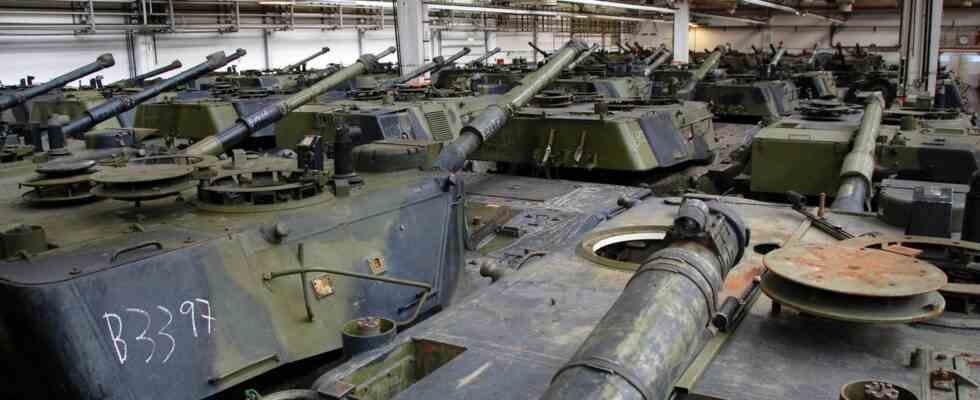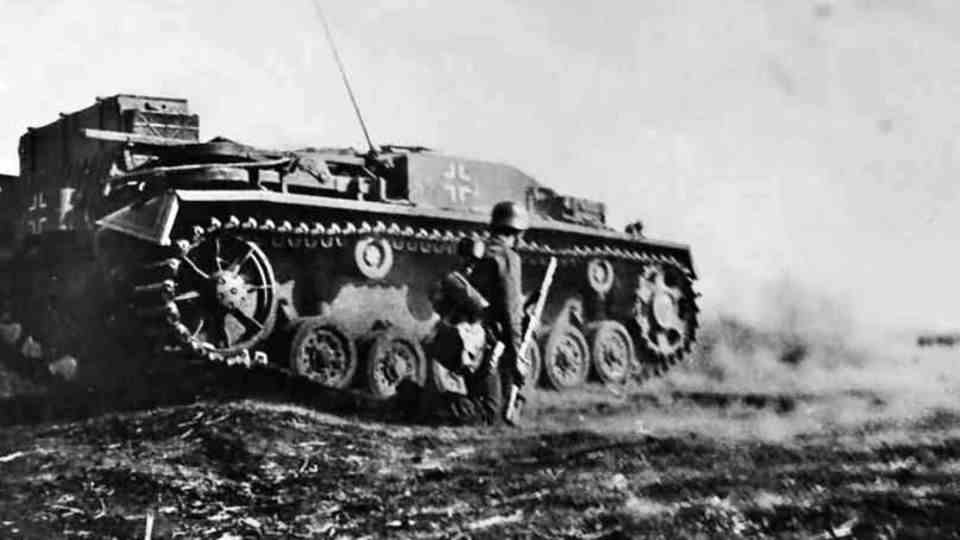delivery of weapons
Leopard 1 – why the tank oldie is so valuable for Ukraine
The Flensburger Fahrzeugbau Gesellschaft (FFG) owns 99 Leopard 1 from Danish stock, a Belgian arms dealer another 50.
© Constanze Emde / dpa
A tank from the 1960s is said to support Kiev. And even if the Leopard 1 is seriously outdated, it can provide useful services. If used correctly.
When discussing the delivery of main battle tanks to Ukraine, the focus was on the Leopard 2. After the decision was made, its predecessor, the Leopard 1, appeared on the scene. And there is a good reason for this: countries are reluctant to part with modern Leopards – such as the Leo 2 A6 – because they would not have the vehicles in their own army. So it happens that Berlin will initially only send 14 pieces.
The old Leopard 1s, on the other hand, only stand around in warehouses, nobody would be without them. Berlin wants to deliver more than 100 copies in cooperation with other countries. And that doesn’t have to be the end of it. A Belgian arms dealer recently spoke up, which alone could supply over 50 tanks. And more can come together. Since the Leopard 1s all need to be made operational, they won’t be delivered all at once, but Kiev could expect a steady stream.
A project of the Adenauer era
The thing has a downside: The Leopard 1 is hopelessly outdated and can no longer do justice to its role as a main battle tank. The Leopard 1 was the first German in-house development of a main battle tank after the Second World War. During development, the mistake of making armor heavier was avoided. The Leopard 1 was designed primarily for mobility, then for firepower and last for armor. This was also due to the fact that it was believed at the time that armor had lost its importance because shaped charge projectiles (HEAT) could weld on any armor. The first production models were made in 1963.
At that time, Konrad Adenauer was Chancellor of the Federal Republic – the Leopard was used in the Bundeswehr until 2003. But also here with the reconnaissance units. Today it is still in service in larger numbers in Turkey and Greece. During its 40 years of service, the tank underwent several revisions. There were six assemblies and four major upgrades. A total of 4700 pieces were built.
main battle tank
Photo gallery Leopard 1 – the first own tank of the FRG (6 pictures)
Weakly armored
Initially, the main gun, the British 105mm L7A3, was the best gun available. Today it is hopelessly outdated. The Leopard 1 cannot penetrate the frontal armor of the T-tanks deployed in Ukraine. Also, these tanks are armed with 125mm guns. For T-72 and T-90, the Leopard 1 would be no match in open battle. The gyroscopic weapon stabilization system and the retrofitted fire control system are comparatively modern. Today it is based on a laser range finder. The computer takes into account weather, movement and type of ammunition. All the gunner needs to do is aim the target – the Leopard 1 can quickly lock on, fire and retreat while on the move. What remains is the insufficient armor, especially on the lower hull. Eventually, the frontal armor will be strengthened, but the Leopard 1 will never reach the level of protection of newer tanks with composite armor.
Find the right job profile
But does that mean it’s useless? Russia also uses tank oldies in some cases. These vehicles can still play a role on the battlefield today, just not in the same way as they did 60 years ago. The Leopard 1 cannot be used as a dueling tank in a battle against a T-tank. The same applies to the role as a main battle tank in a moving battle. It would be too unprotected and underarmed for battles between two groups of tanks.
The Leopard 1 could still fill other tasks today. It should not be forgotten here that the infantry fighting vehicles and armored personnel carriers used in Ukraine are usually far less well protected and armed. The Leopard 1 could accompany infantrymen and support them with its firepower. So roughly the way assault guns were used in World War II. In the Ukraine war, tanks are often used as mobile artillery that engages the enemy with indirect fire. And a Leopard 1 will not become a Panzerhaubitze 2000 either, but it can be used at medium distances and its effect can be enhanced by drones.
The Leopard 1 can play a role in defense and infantry support. And then there is the sheer quantity. Greece alone is said to have around 400 Leopard 1s in service, Turkey 500. It is important now to make provisions for the deployment. As soon as the oldies are in the field, they need ammunition in a caliber that is actually decommissioned and spare parts to stay fit in the field.



